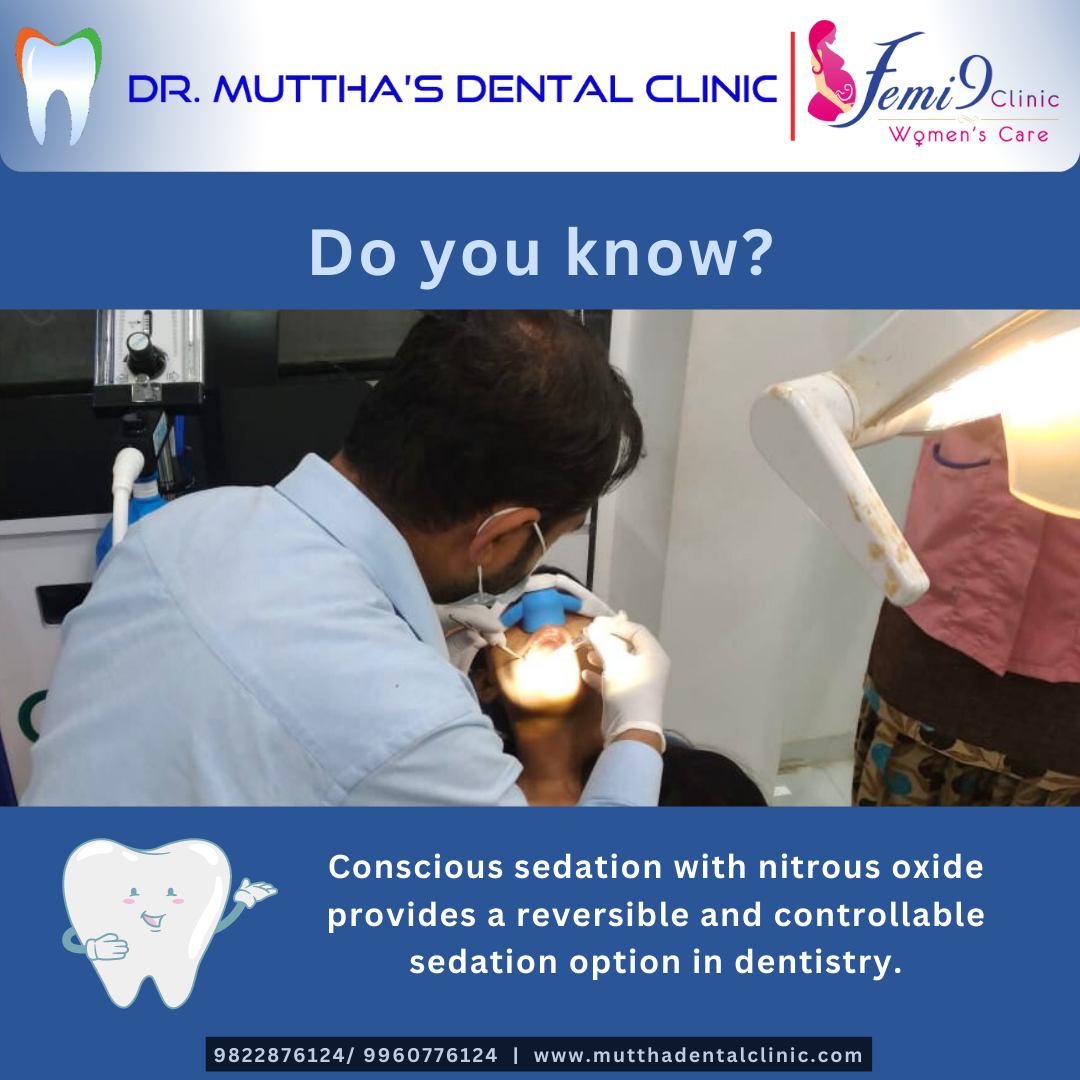Unique advantage of Nitrous oxide
Nitrous oxide, also known as laughing gas, offers a unique advantage in terms of its reversibility and controllability as a sedation option in dentistry.
One of the key benefits of nitrous oxide is its reversible nature. Unlike other sedation methods that may have longer-lasting effects, nitrous oxide has a rapid onset and offset of action. Once the administration of nitrous oxide is stopped, the effects quickly wear off, allowing patients to recover their normal level of alertness.
This reversibility provides flexibility during dental procedures. If at any point during the treatment the sedation level needs to be adjusted or reduced, the dental professional can easily titrate the nitrous oxide concentration to meet the patient's needs. This level of control ensures that the sedation remains optimal throughout the procedure.
The ability to control the sedation level is particularly useful in cases where the patient's response or tolerance may vary. By closely monitoring the patient's level of sedation and adjusting the nitrous oxide concentration accordingly, the dental professional can maintain a comfortable and safe environment throughout the treatment.
Moreover, nitrous oxide allows for a quick recovery time. Patients can typically resume their normal activities shortly after the dental procedure without experiencing any residual sedative effects. This makes nitrous oxide a convenient option, minimizing downtime and allowing patients to carry on with their day after the appointment.
It is important to note that the administration of nitrous oxide should be performed by trained dental professionals who are experienced in its usage and monitoring. They will ensure that the sedation level is carefully controlled and adjusted as needed, providing a safe and effective dental experience for the patient.
#conscioussedation #nitrousoxide #laughinggas #dentistry #problem #solution #health #oralhealth #teeth
